Modern power generation systems are becoming more sophisticated and efficient than ever before. As the world looks to meet growing energy demands, new technologies such as solar and wind power have become increasingly popular.
These renewable energy sources are not only clean but can provide a cheaper, more sustainable option compared to traditional forms of electricity production.
Additionally, power generation systems may also include various types of industrial ball valves. These industrial valves are critical components in power generation systems because they control the flow of fluids and gasses, and industrial ball valves are commonly used due to their durability and ease of maintenance.
They can be used to control the flow of water, steam, or other fluids in a hydroelectric power plant, or to control the flow of coolant in a nuclear power plant. Industrial valves are also used in fossil fuel power plants to control the flow of fuel and combustion air to the boiler. Overall, industrial valves play a crucial role in the safe and efficient operation of power generation systems.
This article will look at the various types of power generation systems that are available today.. This will also explore the impact of various power sources on the environment and the economy. Whether for an individual looking to power for one’s home or a business trying to reduce operational overheads, this article has something for everyone.
How Does a Power Generator Work?
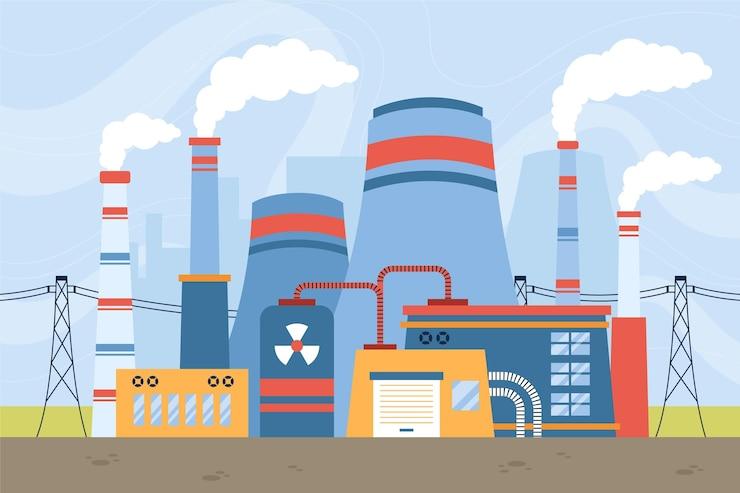
A power generator is an electrical device that converts mechanical energy into electrical energy. It works by harnessing the kinetic energy of a spinning turbine or engine and converting it into electrical energy (AC or DC) through electromagnetism.
Generators are composed of several key components including the rotor, diode bridge, stator, and commutator. The stator is made up of an outer shell containing coils and iron cores that support the rotor.
The commutator consists of copper bars connected to each coil inside the generator and reverses the direction of current each time the rotor turns.
In small turbines, such as those used in home generators, oil is used to lubricate moving parts and resist corrosion. In large turbines, hydrogen-filled chambers serve as cooling agents as well as lubricants.
An industrial valve company may play a role in the power generation process by supplying the valves used to regulate the flow of cooling agents and lubricants in large turbines, ensuring the efficient and safe operation of the generator. Additionally, the industrial valve company may also provide valves for controlling the flow of fuel, air, and other resources necessary for the operation of the generator’s engine.
Types of Power Generation Systems
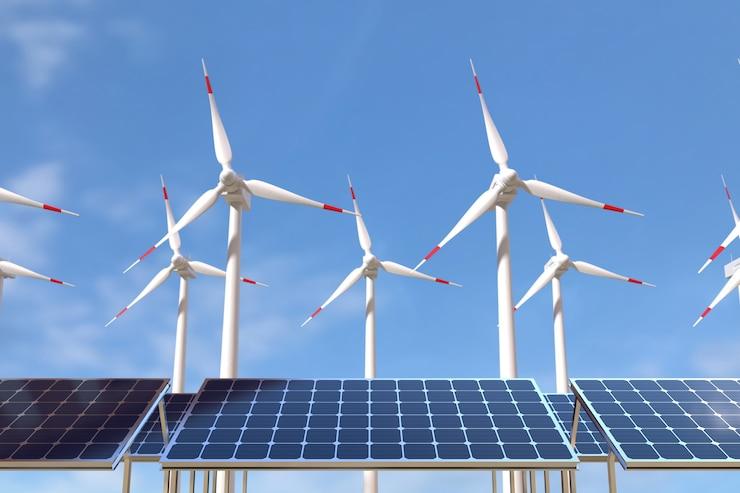
Power generation systems are used to provide electricity for a variety of needs. There are numerous types of power generation systems available today. Here are the different types of power generation systems:
Fossil Fuel Systems
Fossil fuel systems use coal, oil, and natural gas to generate electricity. These types of power plants are still in widespread use but can be very inefficient due to high emissions and environmental impacts.
Fossil fuel systems are extremely efficient, and they have been the primary source of electricity generation for many decades. They are also relatively cheap to build and run.
However, fossil fuels are nonrenewable resources whose combustion emits greenhouse gases and other pollutants that contribute to climate change and air pollution. Furthermore, because of price fluctuations, fossil fuel systems are less predictable than other forms of energy generation.
Due to environmental concerns, many countries are starting to phase out fossil fuel systems and transition to cleaner forms of energy generation, such as renewable energy sources like wind, solar and hydro-power.
Nuclear Power Plants
Nuclear power plants utilize nuclear fission reactions to generate electricity. These are often considered safer than fossil fuel systems, but they also come with their own set of problems, including the risk of radiation leaks and the need for long-term storage of radioactive waste.
Nuclear energy facilities boast a high efficiency and small environmental consequences, for they generate no greenhouse gasses or air pollutants during operation. They also have a low operating cost, but a high capital cost, and the disposal of radioactive waste is a major concern.
Furthermore, nuclear power plants are subject to safety regulations and are susceptible to accidents and sabotage, both of which can have serious consequences.
Hydropower Generation Systems
Hydropower is a renewable and reliable form of energy produced by the power of flowing water. It harnesses the potential energy of water that is stored in reservoirs created by dams or natural bodies of water such as rivers or streams. Hydropower systems rely on the power of water to turn turbines and generate electricity.
Wind Power Generation Systems
In the past few decades, wind power generation systems have become more popular as an alternative way to get electricity. Wind turbines, also called wind power generators, use the wind’s kinetic energy to make electricity that can power homes and businesses.
Geothermal Power Generation Systems
Geothermal is derived from the natural heat of the Earth’s core and uses this heat to generate electricity. These systems can be used as a primary or secondary power source in many countries, but they are most commonly found in areas with high levels of geothermal sources such as Iceland and New Zealand.
Solar PV Power Generation Systems
Solar Photovoltaic (PV) power generation systems are composed of solar panels, or modules, that convert sunlight directly into electricity. They have no moving parts and so require minimal maintenance, making them a reliable and cost-efficient source of renewable energy.
Biomass Power Generation Systems
Biomass power generation systems use organic matter to generate electricity. These systems convert biomass, such as agricultural and forestry residues, wood chips or pellets, into a combustible gas or liquid fuel that is then burned to generate electricity
Wave and Tidal Power Generation Systems
Wave and tidal power generation systems use the power of waves or tides to generate electricity. Wave power is created when the energy of ocean surface waves is used to pump pressurized water through turbines to produce electricity.
Tidal power is harnessed by the gravitational forces created by the rotation of the moon and sun, which causes changes in sea levels resulting in water flowing in and out of estuaries. This flow can be captured and directed through turbines to generate electricity.
Ocean Thermal Energy Conversion Systems
These systems use the thermal difference between the surface and deep oceans to capture energy from the ocean’s thermal gradient. It works by pumping cold water from deep in the ocean to the surface, where the sun heats it up through an evaporator. The hot water is then used to turn a turbine to generate electricity, which can be sent to the power grid or stored in batteries for later use.
Fuel Cell Power Generation Systems
They work by combining hydrogen and oxygen to produce electricity through an electrochemical reaction. They are gaining popularity due to their numerous advantages over traditional power sources, such as natural gas and coal.
List of Power Generation Equipment
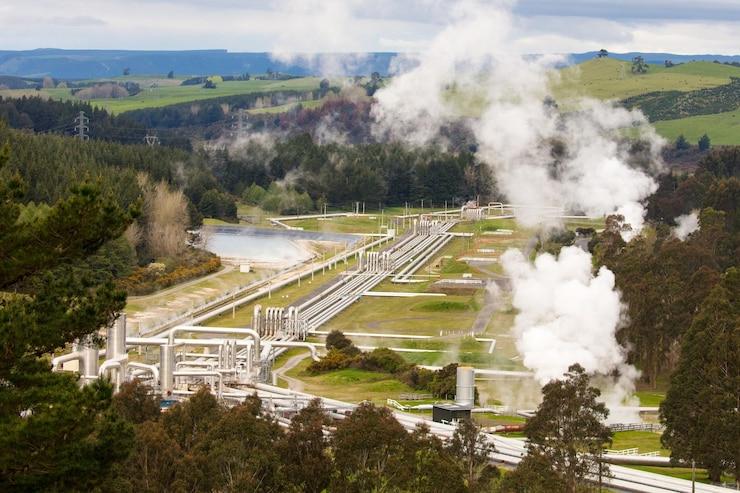
Diesel Generators
These are power producing machine solutions that utilize diesel fuel to generate electrical energy. They are commonly used for backup power for essential services and can also be used for other applications such as powering equipment off the grid or providing supplemental power for peaks in demand.
Wind Turbines
These are used to generate electricity from the kinetic energy of the wind. They can be used to generate power in both onshore and offshore wind farms.
It is also a clean, renewable source of energy that doesn’t put out any greenhouse gases or pollution when it’s running. They are also low-maintenance and have a long lifespan of 20-25 years.
However, their output is affected by wind conditions, and their efficiency may decrease in low wind situations. Wind turbines are becoming a more popular option for generating electricity as wind energy becomes more cost-competitive with fossil fuels.
Hydroelectric Power Plants
Hydroelectric power plants capture and store the kinetic energy of rushing water in large reservoirs behind a dam. The water then flows through pipes and is forced through turbines, which spin a generator to produce electricity.
Valves used in Power Generation
The industrial valves used in hydroelectric power plants are a critical component in controlling the flow of water through the pipe. When properly installed, these valves can be used to regulate the speed and flow of water needed to generate electricity. Selecting the right industrial ball valve & butterfly valve manufacturer is important, as not all manufacturers offer the same quality and performance levels.
Gas Turbines
These are a type of internal combustion engine that uses compressed air to spin a turbine and generate mechanical or electrical energy.
They are extremely efficient and can run on a variety of fuels such as natural gas, propane, diesel, and kerosene. They also have low emissions and can start and stop quickly, making them ideal for use in peaker and combined-cycle power plants. They are also increasingly being used to power aircraft in the aerospace industry.
Solar Panels
These work by converting sunlight into electrical energy. The cells within the panel absorb photons from the sun’s rays and release electrons, which are then directed through wires to create an electric current.
The energy produced by solar panels is completely pure and renewable; they produce no harmful by-products or pollutants during operation. They are also low-maintenance and can last for 25-30 years if properly cared for. With the cost of solar panels falling over time and the growing demand for clean energy, solar power is becoming a more popular way to generate electricity.
Biomass Generators
Biomass generators are a type of electricity-generating machine that utilizes the energy contained in biomass, such as wood chips, agricultural waste, or sewage sludge. Biomass generators are used to generate electricity from renewable sources with a minimum environmental impact.
Geothermal Energy Systems
Geothermal energy systems are renewable and sustainable power sources that actively use the heat of the Earth’s interior to generate electricity.
The electricity produced using this method is clean, reliable, and cost-effective. It produces no carbon dioxide emissions, and thus does not contribute to global warming. In addition, it requires very little maintenance, making it an efficient way to produce energy. Geothermal energy systems can be used in residential, commercial, and industrial applications.
Microturbines
They are small turbines that can be used at home or in a business to make electricity and power different appliances. Microturbines work by converting fuels such as natural gas, propane, diesel, or kerosene into usable energy.
Fuel Cells
These are devices that convert chemical energy into electrical energy. They work by separating hydrogen and oxygen molecules, then combining them back together in a chemical reaction to produce electricity.
Wave Power Systems
Wave power systems are made up of generators that extract the mechanical energy from waves and convert it into electricity.
The most common type of wave power generator uses what are known as ‘point absorbers,” which are devices that can capture the energy from waves and convert it into mechanical energy. These devices are usually connected to a turbine or generator to produce electricity.
Technologies of Generation
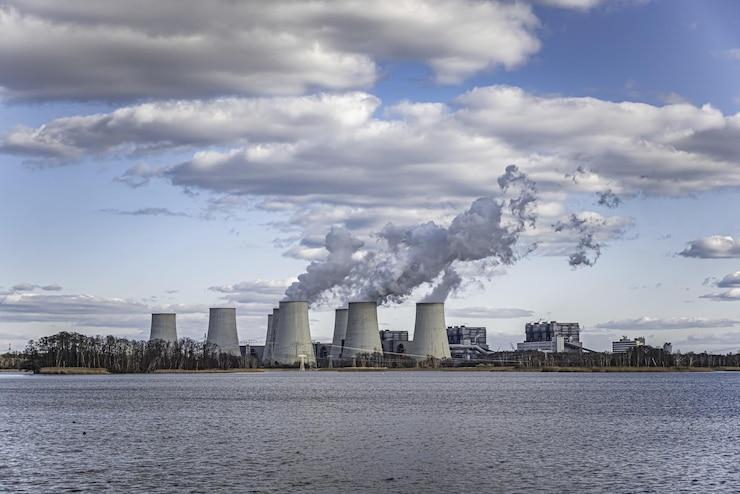
Generation technologies are methods used to produce electricity for a variety of purposes. The following are the different technologies of generation:
Nuclear Power
Nuclear power is a clean, reliable source of energy that has been in use around the world for many decades. It is based on the process of nuclear fission, where atoms are split apart and release energy as heat.
Wind Power
Wind power is the process of using airflow to generate electrical power. It’s a form of renewable energy that has been used for centuries but has increased in popularity in recent years due to its clean and cost-effective nature.
Solar Power
It is a type of renewable energy that converts the energy of the sun into electricity. Photovoltaic cells absorb sunlight and convert it into direct current (DC) electricity, which can then be used to power homes and businesses.
Geothermal Power
Geothermal power is a form of energy generated from the heat retained beneath the surface of the Earth. This heat is harvested via various methods, such as wells, hot springs, and geysers. Wells are to be drill deep into the Earth to access the hot water or steam that lies beneath the surface and can then be used to drive a turbine connected to an electricity generator.
Hot springs are naturally occurring pools that come from underground sources and can be used to drive a turbine when captured in a reservoir. Geysers are jets of steam under pressure, which can be harnessed for energy.
The primary benefit of geothermal energy is that it produces no pollutants, making it an environmentally friendly option. As well as this, it can often be cheaper than other types of renewable energy such as solar or wind power. Additionally, unlike other forms of renewable energy, it can provide a steady and reliable base load while still being able to adapt to changing demands.
Hydroelectric Power
Hydroelectric power is one of the most efficient and cost-effective forms of energy production. It can be used to provide reliable and affordable electricity in rural and remote areas, as well as large metropolitan areas
Biofuels
Biofuels are created by a process known as ‘biomass conversion’ which is the conversion of organic matter into combustible or usable fuel sources. The most common method for producing biofuels is through the process of fermentation, where organic materials such as crop residues, animal wastes, and even garbage are broken down using microbes or enzymes to form a slurry of sugars and organic acids.
This slurry can then be fermented with bacteria to create ethanol, which can be used as a fuel source in cars, trucks, and other forms of transportation. Additionally, vegetable oils can also be processed and turned into biodiesel, which can be used in engines instead of traditional petrol or diesel.
Biomass
Biomass is an energy source made from living things. It is the most natural alternative to traditional fossil fuels. The term biomass encompasses a broad range of plant materials and animal waste, such as wood and agricultural crops like corn, wheat, and rice, which were used by humans at the very beginning of their civilizations.
In more recent times, biomass has been used to generate electricity and heat as well as to produce biofuels, biogas, and chemicals.
Wave and Tidal Energy
Wave energy is a type of energy that can be used again and again. It comes from the ocean’s waves. It happens when waves move the water’s surface up and down, changing the pressure of the water below.
This pressure difference in the water can be harnessed to create electricity. Wave energy devices are designed to capture this kinetic energy as it passes by and convert it into usable electrical power.
Tidal energy is a renewable energy that comes from the way ocean water moves with the tides. The sun and moon’s pull on Earth causes the oceans to move in a pattern called a tide. This is because the sun and moon both pull on Earth. This tidal motion can be harnessed and used to generate electricity through the use of special tidal energy turbines or generators that are placed underwater in areas where there is strong tidal flow.
Natural Gas
Natural gas is a combustible, gaseous mixture of hydrocarbons and other organic compounds. It is highly flammable, and its primary use is as a fuel source for heat and power generation, heating, cooling, and cooking. Natural gas is also used in manufacturing processes, transportation, and the production of chemicals.
How to Select the Performance Power Generation Equipment
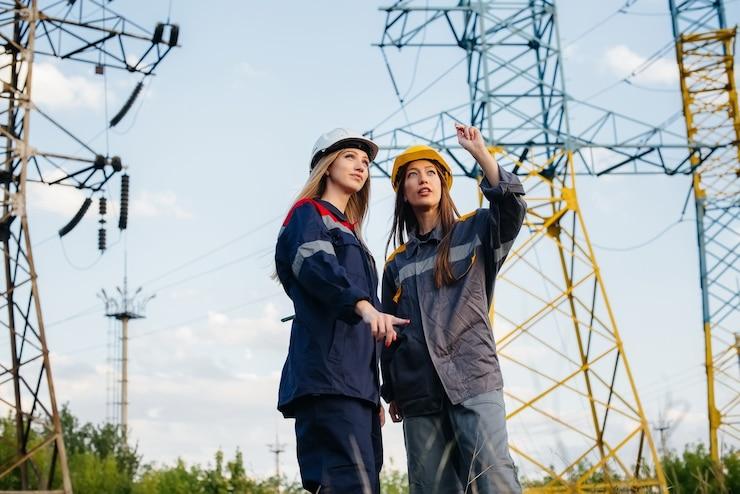
Choosing the right performance power generation equipment is an important decision. To ensure consumers are selecting the right equipment for their specific needs, here are a few things to consider:
What Kind of Power Output Do Customers Need?
Consumersneed to be aware of the exact amount of power that it will require to fulfill theirneeds and the projects that they are working on.
What Type of Fuel or Electricity Is Needed?
Consumers will need to decide what type of fuel or electricity the equipment will need in order to operate. Considerations such as cost, efficiency, and compatibility should be taken into account.
Is the Equipment Environmentally Friendly and Safe?
When choosing performance power generation equipment, it is important to make sure that it is safe and environmentally friendly. Selecting eco-friendly options can help minimize carbon footprint.
How Efficient Is the Equipment?
Efficiency is an important consideration when selecting power producing machines. Make sure to select models that offer maximum efficiency in order to save money and reduce energy waste.
Is the Equipment Reliable?
Equipment failure can be costly, so it’s important to make sure that consumers select a system that has high reliability and longevity. Look into the brands and products on the market and read customer reviews to make a better decision. It should also factor in the cost of maintenance, repair, and replacement parts when evaluating the reliability of a system.
Conclusion
Selecting the right power generation equipment for any consumer’s needs can be a challenging task. With careful evaluation of the various options available in power generation systems, such as fossil fuels, nuclear, hydropower, wind, geothermal, and solar PV, engineers can make an educated decision that will give reliable, cost-efficient and environmentally friendly electricity.
By considering factors such as fuel or electricity type, efficiency, and reliability when choosing equipment, consumers can ensure that power generation equipment meets its specific needs.
When it comes to choosing the right equipment for power generation needs, it is absolutely essential that any consumers work with a reputable and knowledgeable manufacturer, such as an industrial valve manufacturer. Valves are one of the crucial components in any power generation system, and a reputable butterfly valve manufacturer can provide high-quality and reliable valves for power generation systems.
Dombor valve is a leader in the production of high-performance valves for the power industry and is considered a top industrial valve company. They offer a wide variety of valve solutions for both conventional and alternative energy sources, with a focus on meeting the unique needs of the power industry.
The company’s valves have been certified for fire protection, low leakage, and other security features, and they boast great durability and tolerance thanks to their streamlined production process.
Dombor also offers a wide range of industrial valves for the production of fossil fuels, biofuels, and renewable energy, using only high-quality materials and construction for dependable and long-term performance. Contact valves manufacturer Dombor today to learn more about the high-performance valves available for any power generation needs.









